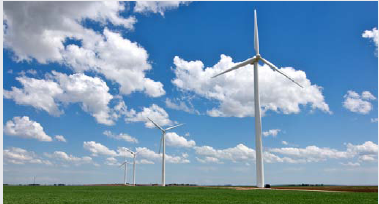| Create a Free Account or Sign In to connect and share in green living and alternative energy forum discussions. |
Greensburg A National Model For Green Communities
Views: 782
Feb 29 2012 12:00 AM | E3 wise in Green Living
 Greensburg, Kansas, was like any rural community in America until a massive tornado leveled much of the town on May 4, 2007. Key leaders in Greensburg and Kansas made a crucial decision not just to rebuild, but to remake the town as a model sustainable community. To help achieve that goal, technical experts from the U.S. Department of Energy (DOE) and the National Renewable Energy Laboratory (NREL) arrived in Greensburg in June 2007.
Greensburg, Kansas, was like any rural community in America until a massive tornado leveled much of the town on May 4, 2007. Key leaders in Greensburg and Kansas made a crucial decision not just to rebuild, but to remake the town as a model sustainable community. To help achieve that goal, technical experts from the U.S. Department of Energy (DOE) and the National Renewable Energy Laboratory (NREL) arrived in Greensburg in June 2007.For three years, the experts worked with city leaders, business owners, residents, and other state, federal, and local agencies to identify ways to incorporate energy efficiency and renewable energy technologies into the town’s rebuilding efforts.
NREL conducted detailed studies to examine energy use; availability of renewable energy resources; energy options; and potential integrated energy solutions that could also be replicated in other communities recovering from disaster or working toward building green. Those recommendations were incorporated into the Greensburg Sustainable Comprehensive Master Plan and furthered the town’s vision of becoming an affordable sustainable community.
Technical assistance provided by NREL has impacted the following areas in Greensburg’s resurrection. Residents also formed a non-profit organization, Greensburg GreenTown™,to provide resources and support for rebuilding.
Energy-Efficient Homes
Through energy modeling, education, training, and onsite assistance, NREL helped renovate and rebuild homes in Greensburg that on average, use 40% less energy than similar buildings built to code—surpassing the goal NREL originally set to achieve 30% energy savings in residential buildings.
With technical assistance from NREL and DOE, Greensburg has built:
New homes that average 40% less energy use than code
Many LEED certified building “firsts” for the country and the state of Kansas, including: City of Greensburg SunChips® Business Incubator—the first LEED Platinum municipal building in Kansas
Kiowa County Memorial Hospital—the first LEED Platinum critical access hospital in the United States
Prairie Pointe Townhomes—the first residential LEED Platinum building in Kansas
New and renovated highly efficient commercial buildings, including: USD 422 Greensburg K-12 School—a LEED Platinum building built to be 60% more energy efficient than standard code and generate electricity with an on-site wind turbine
Kiowa County Courthouse—renovated with sustainable and energy-saving technologies while maintaining the structure’s original design
A 12.5-megawatt wind farm that produces enough energy to power the entire town and beyond
Five years after the tornado, Greensburg’s per capita ratio of U.S. Green Building Council Leadership in Energy and Environmental Design (LEED®) certified buildings is one per approximately every 129 citizens. In a town of 900 people, that’s the highest per-capita concentration of LEED buildings in the United States.
NREL is a national laboratory of the U.S. Department of Energy, Office of Energy Efficiency and Renewable Energy, operated by the Alliance for Sustainable Energy, LLC.
High-Performance Commercial Buildings
NREL conducted modeling and analysis and provided technical assistance in the construction of a new city hall, business incubator, K-12 school, hospital, and other public and private commercial buildings.
Greensburg’s new BTI-John Deere dealership participated in NREL’s Commercial Building Partnerships, a DOE-sponsored collaborative research project focused on improving energy efficiency in commercial buildings. Complete with two wind turbines producing 4.2 kilowatts (kW) and 1.9 kW of electricity, the LEED Platinum building is a model for other John Deere dealerships.
Distributed Renewable Energy
To help local distributed system owners get the most value for electricity sent back to the grid, NREL drafted safety and reliability ordinances, an interconnection agreement, and net-metering policies for the city to consider.
NREL assisted with planning for 50-kilowatt wind turbines at the local hospital and school; several small turbines at a local business; solar photovoltaic systems on the town’s business incubator; and light emitting diode streetlights in major portions of the community.
Alternative Fuels and Vehicles
As part of the master plan for rebuilding green, NREL conducted studies outlining opportunities for the town to use alternative fuels, electric vehicles, and hybrid-electric vehicles, as well as develop alternative-fuel filling stations.
In an effort to identify potential business and job creation opportunities, NREL researched and published a report on developing a local biomass pelletization or briquetting plant that could provide fuel for thermal energy for buildings, ethanol plants, or co-firing in power plants.
Education and Outreach
NREL delivered locally targeted presentations, fact sheets, training sessions, and feasibility studies to residents, architects, engineering firms, and builders, and organized a special visit for K-12 students and residents by NREL’s mobile RnE2EW education van.
Project details, successes, and lessons learned were communicated through a buildings database, numerous publications, webinars, a website, and the media.
For more information, visitwww.eere.energy.gov/deployment/greensburg.
Front page photos (l–r) from FEMA (Federal Emergency Management Agency), NREL/PIX 16290; Joah Bussert, Greensburg GreenTown, NREL/PIX 170

